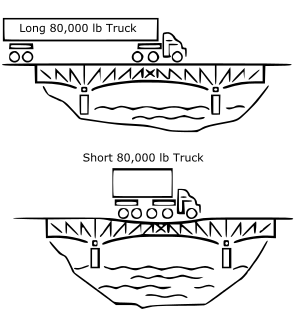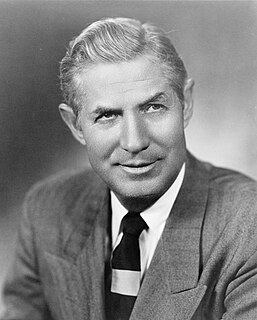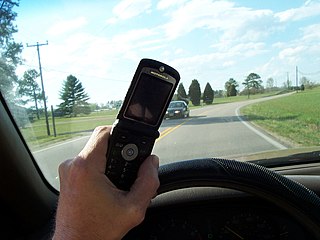 W
WCarwalking is the act of stepping onto and walking across a stationary car. Depending on the technique and equipment used, carwalking can lead to damage of private property. It often is a response to cars being parked illegally in areas exclusively allocated to pedestrians and a protest against the negative impacts of high motorization rates in urban areas.
 W
WVarious laws in the United States regulate the use of mobile phones and other electronics by motorists. Different states take different approaches. Some laws affect only novice drivers or commercial drivers, while some laws affect all drivers. Some laws target handheld devices only, while other laws affect both handheld and handsfree devices.
 W
WA digital tachograph is a device fitted to a vehicle that digitally records its speed and distance, together with the driver's activity selected from a choice of modes.
 W
W"Driving while black" (DWB) is a sardonic description of racial profiling of African-American motor vehicle drivers. It implies that a motorist may be stopped by a police officer largely because of racial bias rather than any apparent violation of traffic law.
 W
WThe Federal Bridge Gross Weight Formula, also known as Bridge Formula B or the Federal Bridge Formula, is a mathematical formula in use in the United States by truck drivers and Department of Transportation (DOT) officials to determine the appropriate maximum gross weight for a commercial motor vehicle (CMV) based on axle number and spacing. The formula is part of federal weight and size regulations regarding interstate commercial traffic. The formula is necessary to prevent heavy vehicles from damaging roads and bridges. CMVs are most often tractor-trailers or buses, but the formula is of most interest to truck drivers due to the heavy loads their vehicles often carry.
 W
WHours of Service (HOS) regulations are issued by the Federal Motor Carrier Safety Administration (FMCSA) and govern the working hours of anyone operating a commercial motor vehicle (CMV) in the United States. These regulations apply to truck drivers, commercial and intercity bus drivers, and school bus drivers who operate CMVs. These rules limit the number of daily and weekly hours spent driving and working, and regulate the minimum amount of time drivers must spend resting between driving shifts. For intrastate commerce, the respective state's regulations apply.
 W
WAn ignition interlock device or breath alcohol ignition interlock device is a breathalyzer for an individual's vehicle. It requires the driver to blow into a mouthpiece on the device before starting or continuing to operate the vehicle. If the resultant breath-alcohol concentration analyzed result is greater than the programmed blood alcohol concentration, the device prevents the engine from being started. The interlock device is located inside the vehicle, near the driver’s seat, and is directly connected to the engine’s ignition system. It is a form of electronic monitoring.
 W
WIn the United Kingdom, there is a legally enforced lighting-up time, defined as from half an hour after sunset to half an hour before sunrise, during which all motor vehicles on unlit public roads must use their headlights.
 W
WIn the United States and Canada, low-speed vehicle (LSV) regulations allow relaxed design and registration laws for four-wheel vehicles that have a maximum capable speed of about 25 mph (40 km/h). Several other countries have similar regulations.
 W
WThe Monroney sticker or window sticker is a label required in the United States to be displayed in all new automobiles and includes the listing of certain official information about the car. The window sticker was named after Almer Stillwell "Mike" Monroney, United States Senator from Oklahoma. Monroney sponsored the Automobile Information Disclosure Act of 1958, which mandated the disclosure of equipment and pricing information on new automobiles.
 W
WThe motor vehicle exception is a legal rule in the United States that modifies the normal probable cause requirement of the Fourth Amendment to the United States Constitution and, when applicable, allows a police officer to search a motor vehicle without a search warrant.
 W
WNew York energy law is the statutory, regulatory, and common law of the state of New York concerning the policy, conservation, taxation, and utilities involved in energy. Secondary sources have also influenced the law of energy in the Empire State.
 W
WA parking violation is the act of parking a motor vehicle in a restricted place or for parking in an unauthorized manner. It is against the law virtually everywhere to park a vehicle in the middle of a highway or road; parking on one or both sides of a road, however, is commonly permitted. However, restrictions apply to such parking, and may result in an offense being committed. Such offenses are usually cited by a police officer or other government official in the form of a traffic ticket.
 W
WPeter rehra, ਪੀਟਰ ਰੇਹੜਾ is a homemade vehicle used in rural Punjab. It is made by assembling a diesel engine,(mostly meant for pumping water), removing the pumpset assembly from it, and joining it with a framework made steel angles and wooden planks, and finally completing it all by putting four movable wheels, two are steerable and the two rear ones directly attached to the engine via a primitive gear-assembly. It is, of course, not meant for high-performance, but for sheer-economy, as it is easily able to carry twenty to twenty five grown-up people, but mostly cannot move at more than 25 km/h. There has been instances when police themselves used this to carry a whole Maruti 800
 W
WMost seat belt laws in the United States are left to the states and territories. However, the first seat belt law was a federal law, Title 49 of the United States Code, Chapter 301, Motor Safety Standard, which took effect on January 1, 1968, that required all vehicles to be fitted with seat belts in all designated seating positions. This law has since been modified to require three-point seat belts in outboard-seating positions, and finally three-point seat belts in all seating positions. Initially, seat belt use was voluntary. New York was the first state to pass a law which required vehicle occupants to wear seat belts, a law that came into effect on December 1, 1984. New Hampshire is the only state that has no enforceable laws for the wearing of seat belts in a vehicle.
 W
WStreet-legal, road-legal, or road-going, refers to a vehicle such as a car, motorcycle, or light truck that is equipped and licensed for use on public roads, being therefore roadworthy. This will require specific configurations of lighting, signal lights, and safety equipment. Some specialty vehicles that will not be operated on roads, therefore, do not need all the features of a street-legal vehicle; examples are a vehicle used only off-road that is trailered to its off-road operating area, and a racing car that is used only on closed race tracks and therefore does not need all the features of a street-legal vehicle. As well as motor vehicles, the street-legal distinction applies in some jurisdictions to track bicycles that lack street-legal brakes and lights. Street-legality rules can even affect racing helmets, which possess visual fields too narrow for use on an open road without the risk of missing a fast-moving vehicle.
 W
WA take-home vehicle, or company car is a vehicle which companies or organisations lease or own and which employees use for their personal and business travel.
 W
WTexting while driving, also called texting and driving, is the act of composing, sending, reading text messages, email, or making similar use of the web on a mobile phone while operating a motor vehicle. Texting while driving is considered extremely dangerous by many people, including authorities, and in some places have either been outlawed or restricted. As a form of distracted driving, texting while driving significantly increases the chances that a driver will be involved in a motor vehicle accident.
 W
WThe United Nations Economic Commission for Europe is one of the five regional commissions under the jurisdiction of the United Nations Economic and Social Council. It was established in order to promote economic cooperation and integrations among its member states.
 W
WA vehicle registration certificate is an official document providing proof of registration of a vehicle. It is used primarily by governments as a means of ensuring that all road vehicles are on the national vehicle register, but is also used as a form of law enforcement and to facilitate change of ownership when buying and selling a vehicle.
 W
WVehicle title branding is the use of a permanent designation on a vehicle's title, registration or permit documents to indicate that a vehicle has been written off due to collision, fire or flood damage or has been sold for scrap.